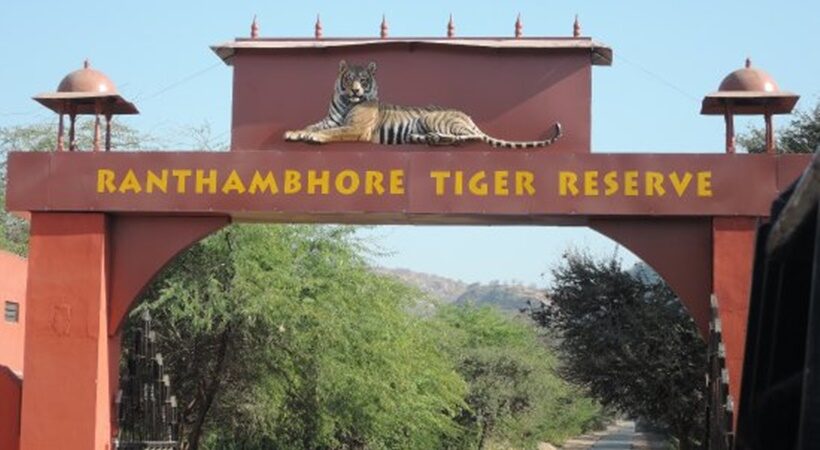Ranthambore National Park is one of the most popular tiger reserves in India. The historic fort of Ranthambore lies within the national park, the former hunting grounds of the Maharajahs of Jaipur until the time of India’s Independence. The fort was recognized by UNESCO for its historical importance and was made a UNESCO world heritage site under the group Hill Fort of Rajasthan. The visitors to Ranthambore experience not only its splendid wildlife but immerse themselves in its historical roots through the fort.
The Ranthambore Fort is a colossal citadel founded in 944 by the Chauhan Rajputs. Built at a strategic location, the fort was coveted by many during its history. Today, the crumbling Ranthambore Fort in the centre of the park is an attraction of its own, set dramatically on a sheer cliff on Thambhore Hill, and surrounded by a verdant forest dotted with decaying pavilions, palaces, lakes, and ponds. The majestic fort is situated atop a 700-foot-high hill, bounded by an enormous stone wall inset with bastions and turrets.
It extends over 4 miles and encloses an area of nearly 2.5 miles. Inside, the complex is filled with many ruins and architectural marvels. Palaces, cenotaphs, tanks, pavilions and temples are scattered among a network of lanes and courtyards. It is considered a fine example of a forest hill fort, and the remains of the Hammir palace are among the oldest Indian surviving palaces.
Though the Ranthambore Fort was believed to be an impregnable defence in its time, the citadel was attacked many times. The Delhi Sultan Iltutmish captured Ranthambore in 1226, but the Chauhans recaptured it after his death in 1236. The armies of Sultan Nasiruddin Mahmud, led by the future Sultan Balban, captured it from Jaitrasingh Chauhan in 1259. Shakti Dev succeeded Jaitrasingh, and recaptured Ranthambore and enlarged the kingdom. Sultan Firuz Khalji briefly besieged the fort in 1290-91 but was unsuccessful in capturing it. In 1299, Hammiradeva sheltered Muhammad Shah, a rebel general of Sultan Alauddin Khalji, and refused to turn him over to the Sultan. The Sultan besieged and conquered the fort in 1301.
After that, the fort was captured by various kings of Mewar, Mughals, Haadas and then the Kachwaha Rajputs of Jaipur. After independence, the fort became a part of the Sawai Madhopur Game Sanctuary in 1955. The park was declared a tiger reserve in 1973 and then became a national park in 1980. Today, the site is open to park visitors on wildlife safaris or those who come to see the fort alone.



















